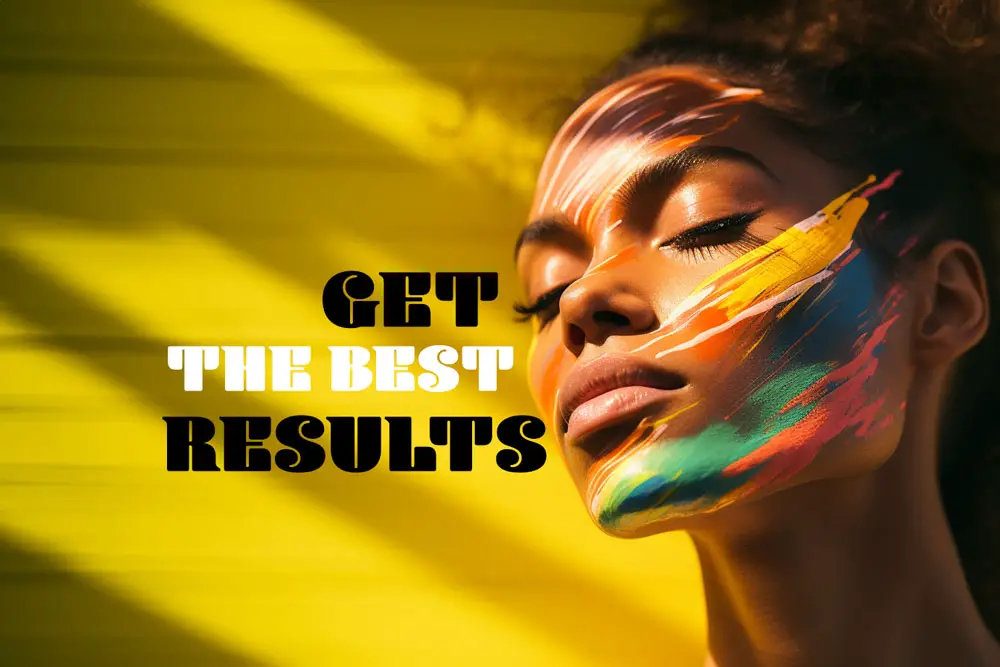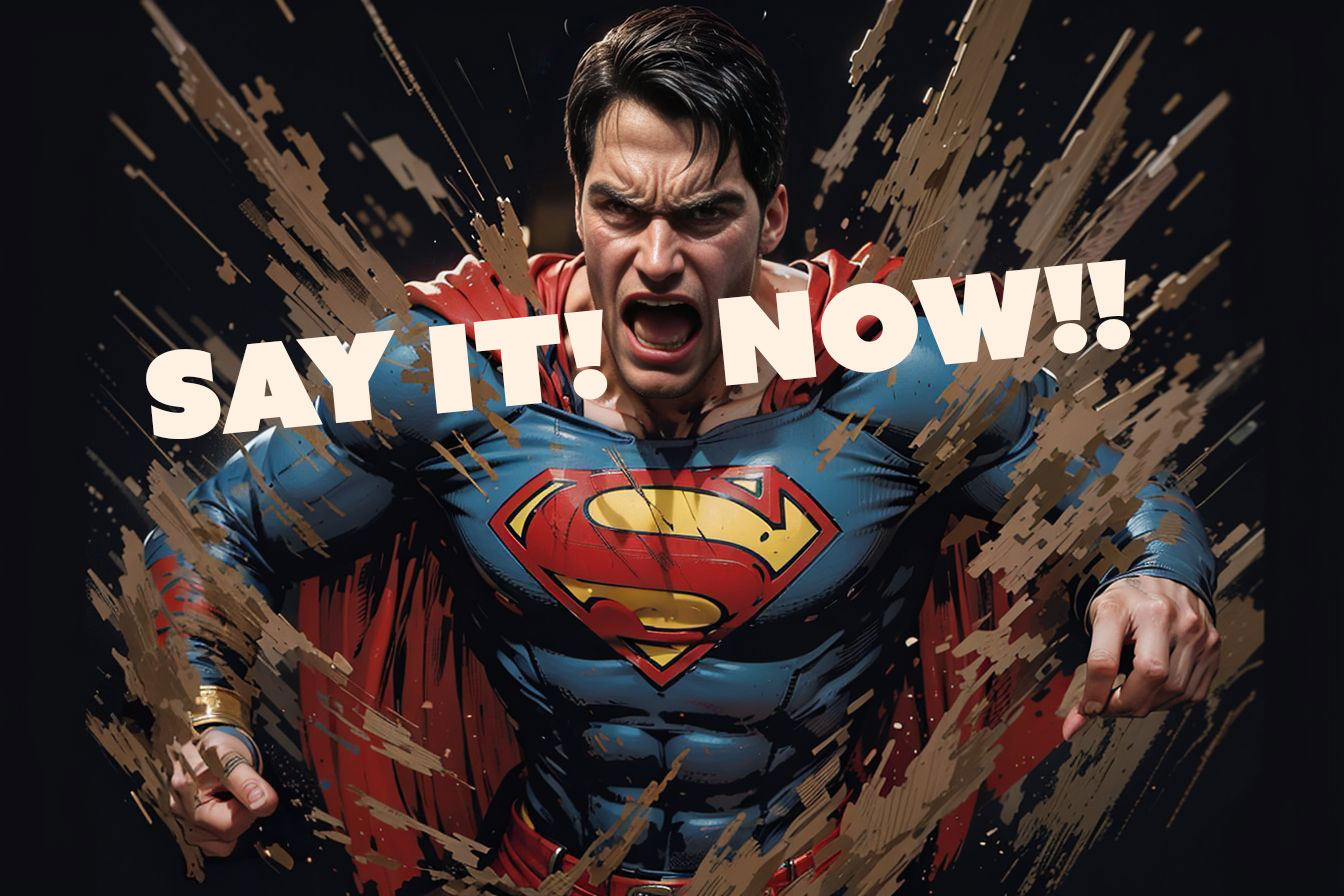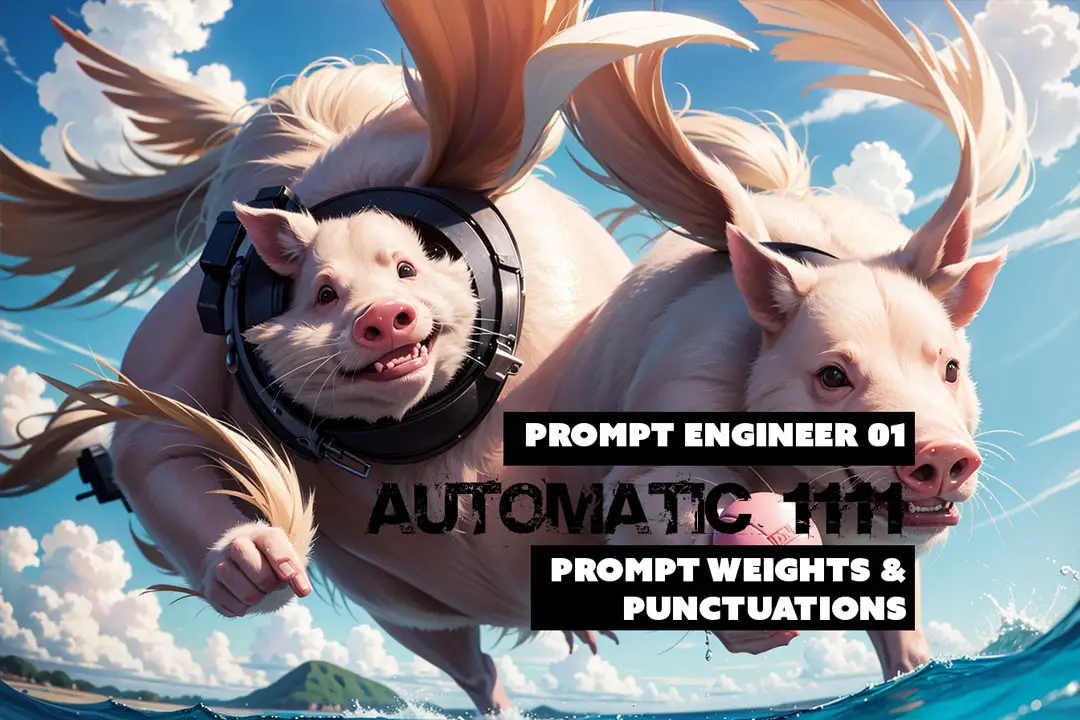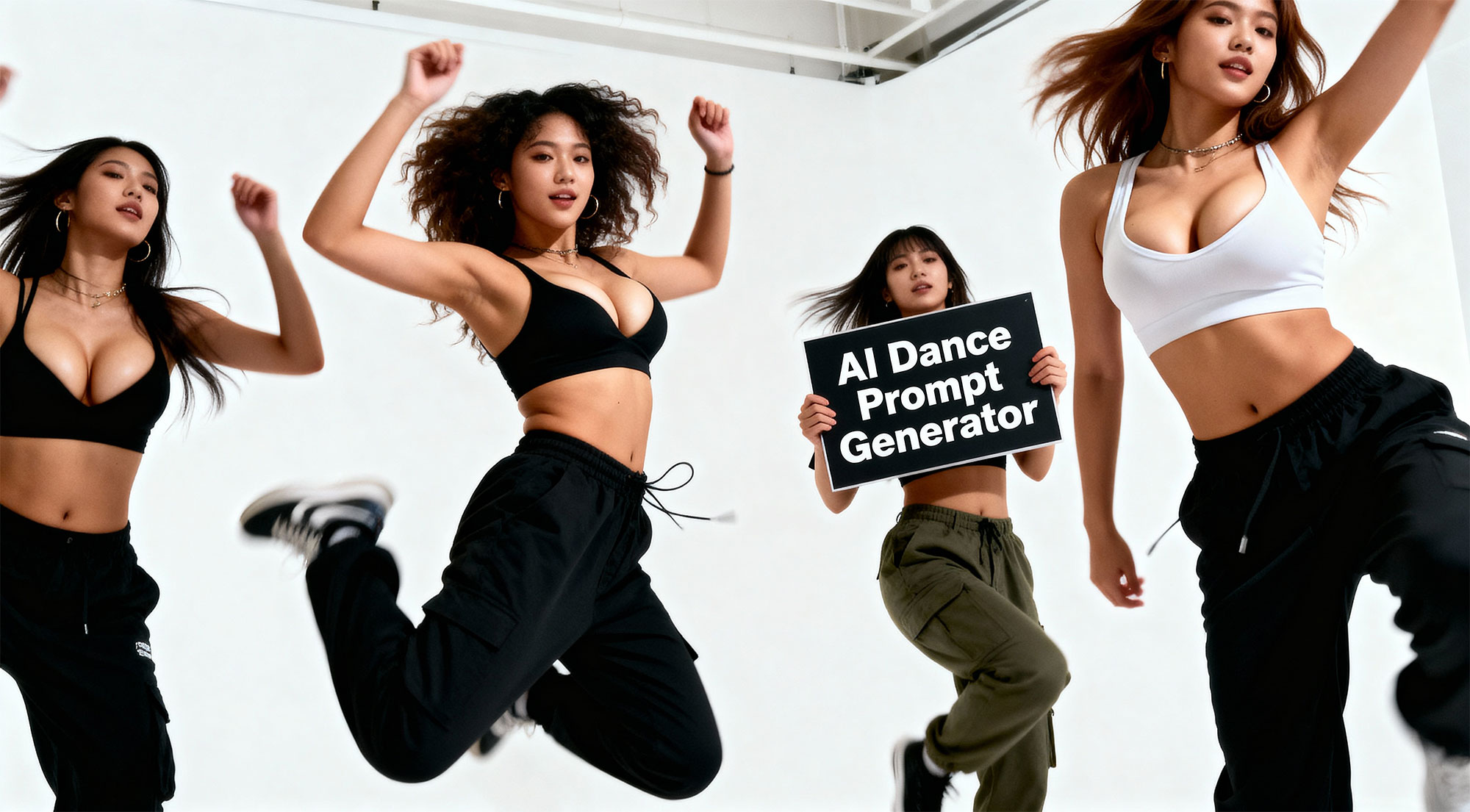
Achieving Optimal Outcomes: How to Get the Best Results with Stable Diffusion
Stable Diffusion stands as a pinnacle in AI-generated art, offering functionalities that are transforming the domain. Given its adaptability and user-friendly licensing, Stable Diffusion is swiftly becoming the foundational core upon which numerous AI generation platforms are being built. Developers and creators across the board find themselves gravitating towards this platform, reimagining and crafting new applications using its powerful model.
How do you get the best results with Stable Diffusion?
Optimal outcomes in Stable Diffusion hinge on a mix of deep artistic understanding and adept utilization of its features to get the best results. A solid grasp of art fundamentals—from the depth of color theory to the finesses of camera angles and diverse styles—is key. When this knowledge is fused with tools like ControlNet for personalized adjustments, effective prompting techniques, the strategic use of negative prompts, and understanding model attributes, you’re not just using the platform; you’re mastering it. Furthermore, training your own models showcases your profound understanding of AI and tailors your output to be truly unique.
Next, we’ll break down the marriage of art styles, color dynamics, and lighting, and how syncing these with Stable Diffusion’s tools can propel your work to new heights.
Table of Contents

A1111 is the preferred web user interface for Stable Diffusion aficionados. It offers a range of functionalities, from detailed image generation to innovative features exploration and even extending its capabilities to video. With every update, A1111 introduces more features, broadening its scope and versatility.
But as is often the case with feature-rich platforms, the complexity can sometimes be overwhelming. Between the vast array of options, the intricacies of the ‘txt2img’ tab, the capabilities hidden within the ‘img2img’ tab, and the specifics of the ‘Upscaler’ options, it’s easy to feel lost.
Although there’s official documentation available, it can be challenging to decipher, especially when navigating the world of extensions. This guide seeks to bridge that gap. Our intention is to provide a clear, concise walkthrough of A1111’s user interface, ensuring you get the most out of this powerful tool.
For a deeper exploration and step-by-step breakdown of the Automatic 1111 interface, check out our detailed guide:

As intrepid explorers of cutting-edge technology, we find ourselves perpetually scaling new peaks. Today, our focus is the Automatic1111 User Interface and the WebUI Forge User Interface. If you’ve dabbled in Stable Diffusion models and have your fingers on the pulse of AI art creation, chances are you’ve encountered these 2 popular Web UIs. Its power, myriad options, and tantalizing dropdown menus promise an exhilarating new ways to create content.
At the heart of Automatic1111’s Web UI, “Prompt Weights” serve as the subtle yet profound steering wheel, guiding the Stable Diffusion towards producing art that mirrors your vision.
Starting with simple, concise prompts can offer a glimpse into the capabilities of the AI. As you progress, incorporating power-packed terms, often referred to as “Super Prompts”, can exponentially elevate the quality of outputs. Phrases like “photorealistic,” “8K,” or “masterpiece” have the potential to transform mundane visuals into captivating masterpieces. Yet, it’s essential to experiment and adapt, as the effectiveness of these terms may vary across different models.
To truly master the art of prompting, two comprehensive resources are linked below:

Mastering the art of prompting can be a game-changer. This comprehensive guide serves as a toolkit to enhance your image prompting skills. Leveraging power words, super prompts, and strategically curated techniques, this handbook provides a foundational blueprint for creating prompts that yield phenomenal results. Some of these prompts may already be embedded in your AI…

Learn the ins and outs of Stable Diffusion Prompt Weights for Automatic1111. I’ll be sharing my findings, breaking down complex concepts into easy-to-understand language, and providing practical examples along the way.

Selecting the right fine-tuned model is as pivotal as crafting the perfect prompt. The model’s training data profoundly influences the outcome, meaning even the best prompts may falter with an ill-suited model. Start your search for the right model at www.civitai.com.
Each model serves varied purposes, so there’s no definitive “best” model. Models fine-tuned from 1.5 or the newer SDXL 1.0 are popular choices, having benefited from community-specific training. These stand in contrast to the broader, general-purpose base models of 1.5 and SDXL1.0. While these base versions can serve as introductory points for those new to prompting, more refined needs may require jumping into specialized models.
Styles range from hyper-realistic to sketched or anime, abstract representations, and many more. Additionally, various styles can be blended to create unique outputs.
Platforms like huggingface.com and Civitai.com are frequented by many for their wide range of leading models, providing the tools and resources needed to select and understand their use effectively.
To learn more about downloading and installing Stable Diffusion models beow:

Learn how to install Stable Diffusion Models for AUTOMATIC1111 Web UI. Access powerful art generators with convenient web interfaces.
Now that we have a basic understanding of fine-tuned models, you might be wondering how to navigate the complexities of fine-tuning yourself. As the world increasingly leans towards a AI tools, personalizing your work becomes not only beneficial but essential. If you’ve been eyeing a future in the AI art industry, it’s vital to realize that understanding the process of training your models isn’t just an added advantage – it’s rapidly becoming a fundamental requirement. And if you’re already armed with existing art skills, your ability to train and personalize AI models becomes an even more powerful tool.
To best utilize the potential of Stable Diffusion, you’ll need to be familiar with the various methods available for training and fine-tuning. Here’s a breakdown of the primary techniques:
Textual Inversion:
This method emphasizes generating specific concepts by introducing new “words” in the embedding space of pre-trained text-to-image models. The result? Enhanced control over text inputs, granting you a more direct influence over the stable diffusion generation process. This is especially valuable for artists looking to seamlessly merge their own style with that of the model.
DreamBooth:
With DreamBooth, you can infuse the Stable Diffusion model with a personal touch, integrating images of subjects close to your heart. Whether it’s your beloved pet or a cherished memory, DreamBooth allows the model to visualize them in diverse settings, based on the text prompts provided.
LoRa (Low-Rank Adaptations):
LoRa offers a faster, more compact approach to fine-tuning. Its magic lies in introducing new subjects or styles to existing Stable Diffusion models in an efficient manner. It’s an ideal choice for those looking to integrate a wide variety of concepts without getting bogged down by extensive training times or massive file sizes.
Hypernetworks:
While both Textual Inversion and Hypernetworks alter the Stable Diffusion model, their methods differ vastly. Hypernetworks, developed by Novel AI, employ a small neural network that modifies the model’s style, specifically targeting the cross-attention module of the noise predictor UNet.
As AI art continues to blossom as an industry, you won’t be just using models – you’ll be creating your own and adding in new personalized data. Whether you’re an established artist or someone venturing into the AI tools, understanding and mastering the art of training your models will prove indispensable.

This captions and data sets guide is intended for those who seek to deepen their knowledge of Captioning for Training Data Sets in Stable Diffusion. It will assist you in preparing and structuring your captions for training datasets.
Inpainting is the new magic eraser. It helps repair images by filling in missing or damaged sections, making the final picture look untouched. Think of it as a tool for photo editors, filmmakers, or digital artists to “fix” any imperfections, like erasing a photobomber or repairing a vintage film scene. You can use it to face swap or change clothe and even more applications.
How does it work?
Stable Diffusion Inpainting uses a heat diffusion process, focusing on the pixels around the damaged or missing parts of the image. The heat diffusion process is like a mathematical game of “pass the parcel,” where pixel values are reassigned based on how close they are to the flawed section. This creates a consistent and smooth finish.
What makes Stable Diffusion Inpainting stand out? It’s consistent and smooth, avoiding the usual hiccups other methods might encounter like being too slow or creating noticeable repair marks. It’s particularly handy for images with intricate details or sharp changes. [Source]
In real-world applications, photographers might use it to polish their shots, filmmakers can restore old movie frames, medical professionals can enhance scan quality, and digital artists can perfect their creations.
Learn How to Inpaint Below:

Learn about Stable Diffusion Inpainting in Automatic1111! Explore the unique features, tools, and techniques for flawless image editing and content replacement.
Imagine trying to describe a sunset to someone who’s never seen one. Some things are just beyond words. That’s where ControlNet comes into play. Instead of struggling to communicate every intricate detail of an image through text alone, ControlNet empowers creators with visual tools, enabling them to guide Stable Diffusion more precisely.
Here’s the magic: With ControlNet, you’re not just shooting in the dark with text prompts. You can visually instruct the AI, leveraging posing tools and map generations. Think of this as creating a blueprint in Photoshop, defining the precise contours and structure of your desired image. Combine this visual guide with your textual prompt, and suddenly you’re in the driver’s seat, steering the AI towards your envisioned outcome, rather than leaving it all to chance.
The shotgun approach? That’s old news. In a burgeoning professional industry of AI art, specificity is paramount. And ControlNet delivers on this front, armed with an arsenal of tools from edge detection using Canny, to crafting depth maps, normal maps, and more. For those in architecture, ControlNet’s MLSD and Segmentation tools open up a world of possibilities.
Another feather in ControlNet’s cap? Upscaling. Enrich your images, adding layers of interpolated details, transforming them from great to outstanding.
Learn more about ControlNet below:

To really utilize the power of prompts, you’ll have to learn the terms in all diverse art culture from Photography, Art Mediums, Cinematography and many more that I don’t even know about yet. Grasping these understanding isn’t just about knowing terms—it’s about internalizing techniques, testing their resonance in your prompts, and teaching the system when it falters.
Allow me to introduce:
The Creative’s Compendium: An Ongoing Glossary for Photography and Cinematography.
This growing guide seeks to bridge your understanding of the intricate dance between image and language.
This guide isn’t just a static list; it’s an evolving treasure trove, primed to sharpen your prompt engineering with insights from Photography and Cinematography. Whether you’re aiming to encapsulate a particular aesthetic, shot type, or the mood of a specific lighting, the Compendium is your reference point.
For example, when a prompt demands a distinct cinematic style, turn to the ‘Aesthetics & Cinematographic Styles’ segment. It ensures your prompt resonates with the very soul of that style. Likewise, for defining shot compositions or playing with light, our sections on ‘Cinematography Cinematic Shots’ and ‘Lighting Styles in Photography and Cinematography’ come to the fore.
In essence, this guide is your toolkit.
It’s here to furnish you with the terminologies of photography and cinematography. As you jump into platforms like Stable Diffusion and Midjourney, let the Compendium be your compass—guiding your prompts to richer, deeper dimensions. Whether you use it as a cheat sheet, a deep-dive resource, or a creative sparkplug, know that with each term you grasp, you’re advancing in the captivating journey of prompt engineering.

This guide is a personal art glossary for me that I’d like to share with you. It’s a collection of terms and concepts that I learned along the way, from 3D animation to AI art. It’s also a reflection of my journey, my challenges, and my discoveries. I hope you find it useful and inspiring.
Firstly, I want to clarify: this isn’t an endorsement to plagiarize or pilfer art. Every creator imbibes inspiration from the world, including the art work of peers and predecessors. Taking cues from an artist’s techniques is a rite of passage in the world of art. My education at the Academy of Art, under the guidance of sage instructors, enlightened me about artists and their hallmark techniques, urging students to weave these inspirations into their unique canvas.
My personal journey, both as an artist and a photographer, has been dotted with inspirations. I’ve observed, dissected, and many times even emulated techniques of fellow photographers.
However, there’s a stark line between drawing inspiration and outright theft. While I’ve compiled a list of artists and their signature styles for a deeper comprehension of talents, I’ve consciously refrained from using artist names in my prompts. Even then, one can argue about the indirect influence of their data. It’s a nuanced debate, in today’s growing wave of AI adoption, it’s likely that this technology will evolve from a passing trend into a new norm.
Today’s world sees an interesting juxtaposition: AI-powered tools, like Stable Diffusion, seamlessly intersect with traditional art. While I’ve trained the system with my personal artistic flair, those datasets remain sacrosanct to me. In this evolving landscape, one truth remains—fresh, original content will always bear the creator’s unique signature. Hence, even in AI art, individuality thrives, limited only by how we use these tools. It’s an area filled with blurred boundaries and nuanced perspectives.

In it’s SDXL 1.0 version, there are over 4000 artists in Stable Diffusion, a collection meticulously gathered for an extensive artistic study. This incredible assembly is not simply a digital archive; it’s a commitment to understanding the diverse array of creative talents and their unique styles and contributions.
Stable Diffusion is the brainchild of a technological renaissance, melding art with digital data. Boasting a repository of over 4,000 artist styles, it serves as a testament to the symbiosis of art and tech. Curious about its range? Both Versions 1.5 and SDXL 1.0 contribute to this artistic digital library. The burning question:
With an expansive collection spanning 4,000+ artists in its SDXL 1.0 release, Stable Diffusion isn’t just a digital archive. It’s a tribute to the multifaceted world of art, celebrating both illustrious maestros and budding modern talents. This venture goes deep into the art universe, creating a visual kaleidoscope, which provides insights into the artistic expanse that Stable Diffusion has embraced and the wonders it can conjure with these datasets.
At present, Midjourney is a frontrunner in AI art generation, producing even more captivating visuals than Stable Diffusion. The speed and quality of its output are astounding. In fact, many artworks showcased on this site have been inspired by Midjourney. I often start my workflow process there, then transition to Stable Diffusion for further refinement and personalization. You then combine these techniques with your own photos. You can flip your workflow anyway you want it.
While I’m still diving deep into Midjourney’s potential, having primarily focused on Stable Diffusion, it’s a tool any artist or enthusiast shouldn’t overlook. Although it may lack the intricate control that Stable Diffusion offers or the expansive community-driven evolution, Midjourney’s power is undeniable. It’s a fantastic platform for generating images that can later be utilized as training data for Stable Diffusion. Many top-notch creations on Stable Diffusion have Midjourney in their origin story.
So, experiment with Midjourney. Master its offerings. Then use its output and elevate it further with Stable Diffusion. Recently, it’s become my go-to for initiating projects and crafting blog imagery and eventually used to change the way I create photos.







Leave a Reply